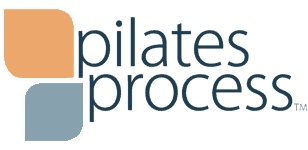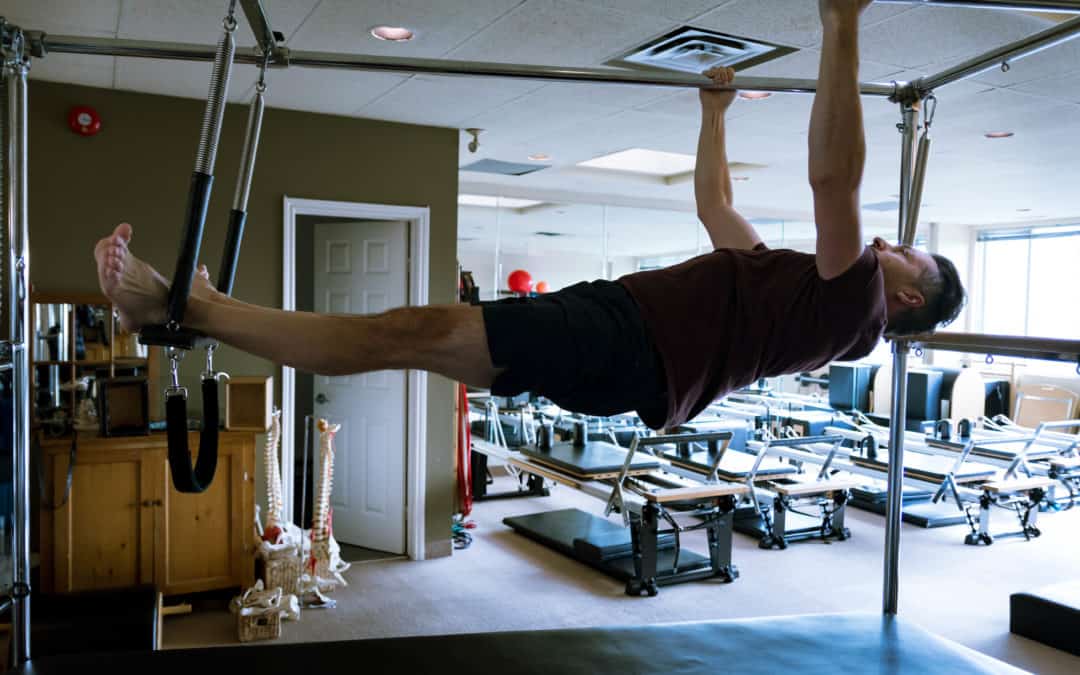Frustrating bouts of lower back pain can affect anyone. From those who are sedentary to the super fit, chronic low back has remained a leading cause of disability worldwide for decades. Research has shown movement and exercise to be among the most successful interventions.
But what if you already go to the gym? And follow a regimen of core strength and stretching? Yet you still get back pain?
This describes many clients I’ve met who have sought out Pilates to help manage their pain. Upon first meeting us, they report little improvement in the degree or the frequency of their pain in spite of a history of an active and disciplined routine.
Movement Habits
We always pay attention to how a client moves when they come into the studio – we watch how they pick up their bag, or reach for their shoes – searching for helpful clues. Everyone is unique and has specific needs, but we do see a common movement pattern among this group.
Guarding against pain they suck in their abs, hold their breath and tighten the gluteals in an effort to protect the back when simply putting their bag down. We see this pattern of excessive bracing repeated when we move into Pilates exercises.
Did this excessive bracing cause the back pain or did chronic pain cause the bracing?
We really don’t know.
But we do know that starting with planks and squats and power ab exercises isn’t going to help.
If we just add exercises without changing the balance between stability, mobility and power, the movement strategy will remain the same, regardless of which exercise is being performed. Core stability will be lacking, power muscles will over work and the lengthening that needs to happen for functional movement to occur, won’t happen. This creates a rigid type of false stability that is in fact not at all stable. Aside from putting way more pressure on joints, excess tone can take away all of the body’s built-in elasticity and ability to absorb force.
It’s why something as benign as stepping off a curb can “put your back out”.
Often the most effective path forward in such cases, is to unwind tension, learn to release and elongate tissues while focusing on core stability, before adding in core strength.
Core Stability versus Core Strength: What’s the difference?
Our core stability muscles underly our power muscles. They support and control alignment in joints more than they create movement. For example, the deep abdominals (transversus abdominals), and the tiny spinal muscles (multifidii) are background support muscles that we can’t easily sense. They function behind the scenes and adapt according to need. Finesse muscles if you will. And they allow the power muscles to work efficiently.
We also need things to release.
A muscle is only available if it can release. Imagine a bicep that’s always contracted – it isn’t useful. It’s the same with abdominals and gluteals. If they’re always in full activation mode, you can’t actually recruit their power.
It’s why here at Pilates Process we love the cue “allow the sit bones to widen and release” when going into a squat. The cue encourages the muscles to stretch and release and can then help to lift the hips on the return.
Summary: Things you can do
If you recognize yourself in this movement description (excessive gripping, lack of release) there are a few things to play with to see if a new plan might work better for you.
Pay attention.
I know. Isn’t this always part of the solution? Do you hold your breath when reaching down? Do you go upstairs by gripping the gluts and hip muscles? What happens if you brace less? And continue breathing?
Warm up with proprioceptive core stability exercises.
Proprioceptive = sensory awareness. Clench and release muscle groups a few times -gluts, abs, shoulders. Get the brain in tune with what a comparative release feels like. Start with low load (light) exercises and try to be as efficient as possible. How little core can you use while remaining steady and stable?
Forgo the power exercises for a week or two to make sure they’re really helping you. If your back is better without them then it’s important to find a new routine that is not feeding into patterns of overuse. Check out our demo video below.
The cool thing about core stability and efficiency training is that it will make your strong, well, stronger.
You’ll be able to access greater power when you do ramp up to those hard core exercises.
So aim for the heavy lifts and push ups and weighted squats. Because when done well – with efficiency, breath, and appropriate tension – they’re great exercises for both core stability and strength.
Need ideas on how to progress? What is a core stability workout?
Check out our you tube video which gives you a sample of what healthy core function looks like.
Questions? We love questions and comments. laura@pilatesprocess.ca
Laura Helsel Gauthier
Founder Pilates Process
Presenter, Teacher, Author

